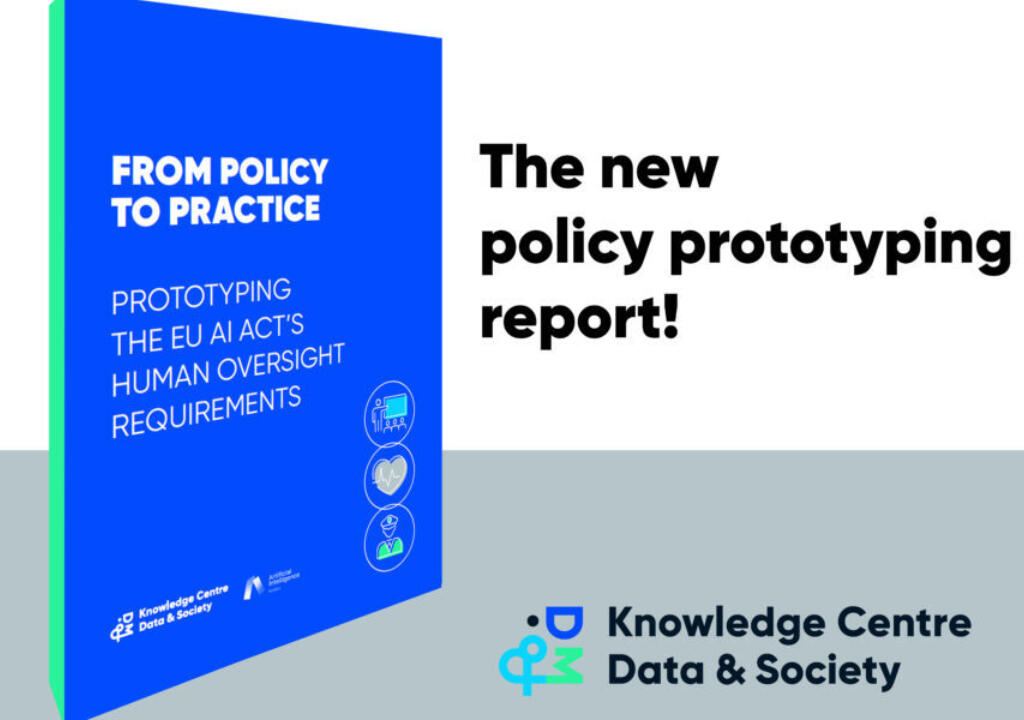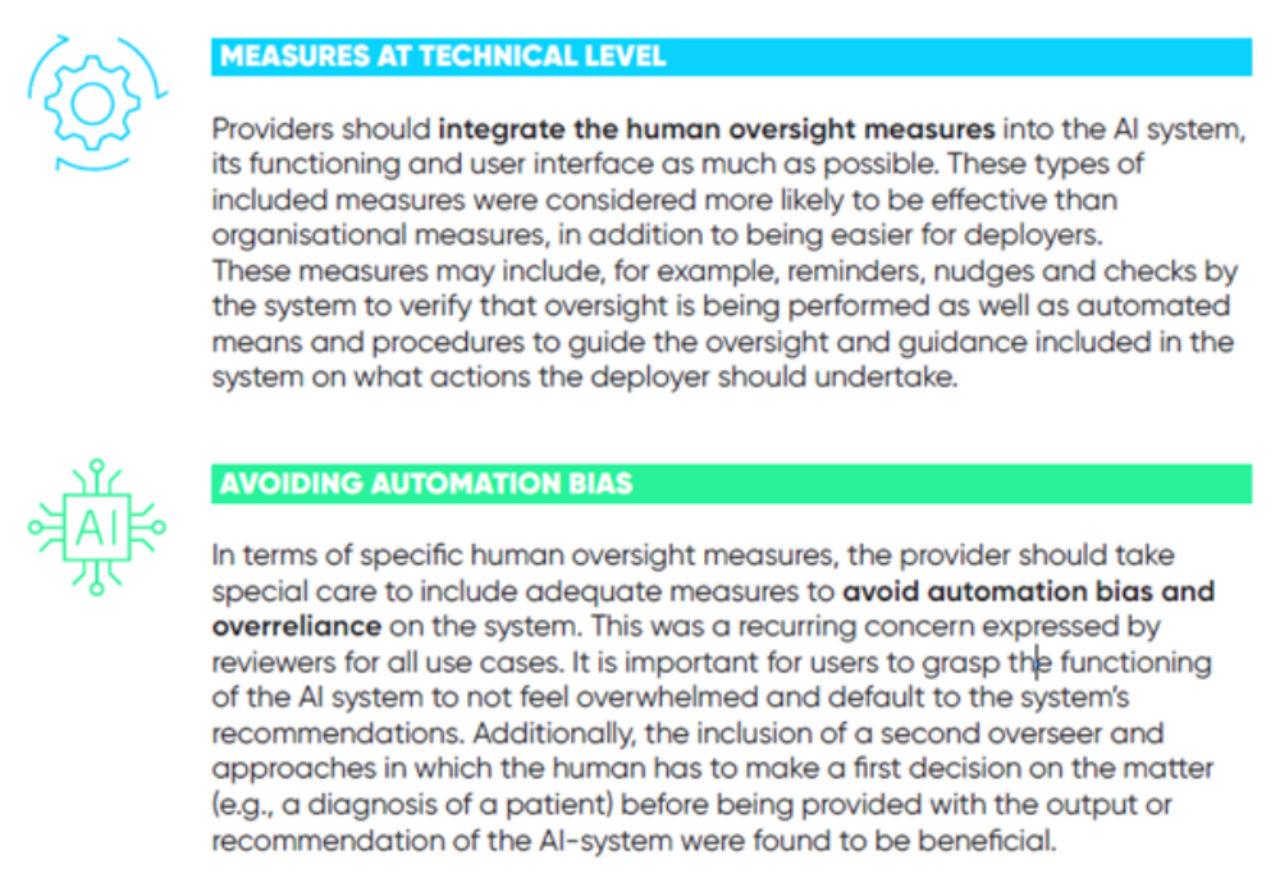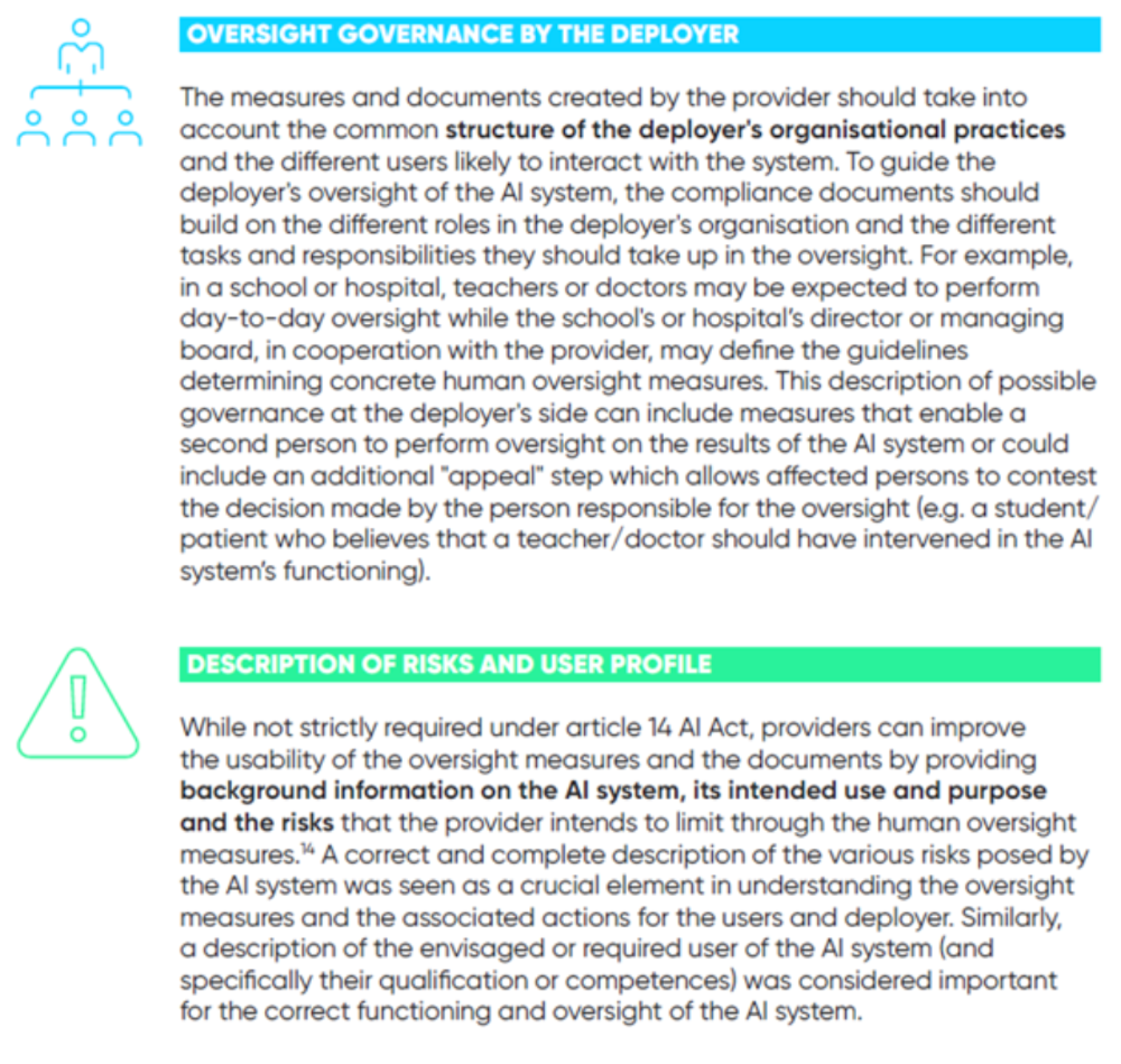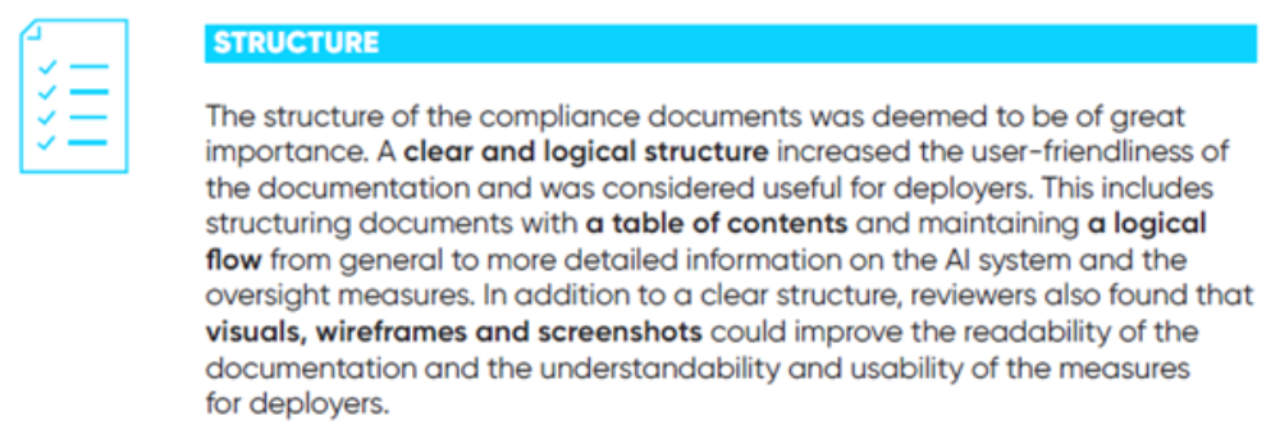After a successful first policy prototyping exercise around the transparency obligations from the AI Act (see our previous report on this), the Knowledge Centre Data & Society is now focusing on the human oversight obligation from Article 14 of the AI Act. In this report, we share some findings on the first implementation of the obligation, as well as regarding the text and clarity of the provision.
Article 14 AI Act establishes that high-risk AI systems must be designed and developed in such a way as to allow effective human oversight. This obligation means that providers must ensure effective human supervision both through the design of the AI system and through organisational measures – to be determined by the provider and implemented by the deployers responsible for its use.








